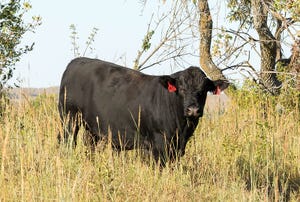Reduce Hay Waste
Take extra steps to make sure your hay lasts longer.Daily feeding reduces the amount of hay refused, trampled, fouled, over-consumed or used for bedding.
December 27, 2011

"Much expense and many long hours go into harvesting and storing hay for winter feeding, so why waste it?" says Bruce Anderson, University of Nebraska Extension forage specialist.
In a recent Hay and Forage Minutes, Anderson explains that cattle will waste as much as 45% of the hay they're fed when they receive it without restriction.
"Research shows that cattle fed hay free access every four days needed about 25% more hay than cattle fed daily," Anderson says. "Daily feeding reduces the amount of hay refused, trampled, fouled, over-consumed or used for bedding."
Next, Anderson points out, restricting hay access by using hay racks, bale rings, electric fences, feed bunks and the like limits the amount of hay trampling.
"If you feed hay on the ground, either as loose hay, unrolled round bales, or ground hay, it is extra important to follow these guidelines," Anderson says. "Limit the hay fed to an amount animals will clean up in a single meal because anything left over will be stepped on, fouled or used for bedding instead of as feed. If you can, use an electric wire or other barrier to restrict access to only one side of the feed on the ground."
All of that is before considering the staggering difference in hay waste based on the type of hay feeder.
According to David Lalman, Oklahoma State University (OSU) Extension beef cattle specialist, research there indicates that using a cone-style feeder or modified-cone feeder with a sheeted bottom should reduce hay waste to 5%-6% of the original bale weight.
"We found that open-bottom hay feeders can waste as much as 21% of the original bale weight," Lalman explains.
The OSU study examined four bale feeder designs: a conventional open-bottom steel ring, a sheeted-bottom steel ring, a polyethylene pipe ring and a modified-cone feeder with a sheeted bottom.
OSU researchers say differences in hay-feeder design don't restrict dry-matter intake by the cattle, but can significantly affect the amount of feed wasted and subsequently the amount of hay fed.
About the Author(s)
You May Also Like





